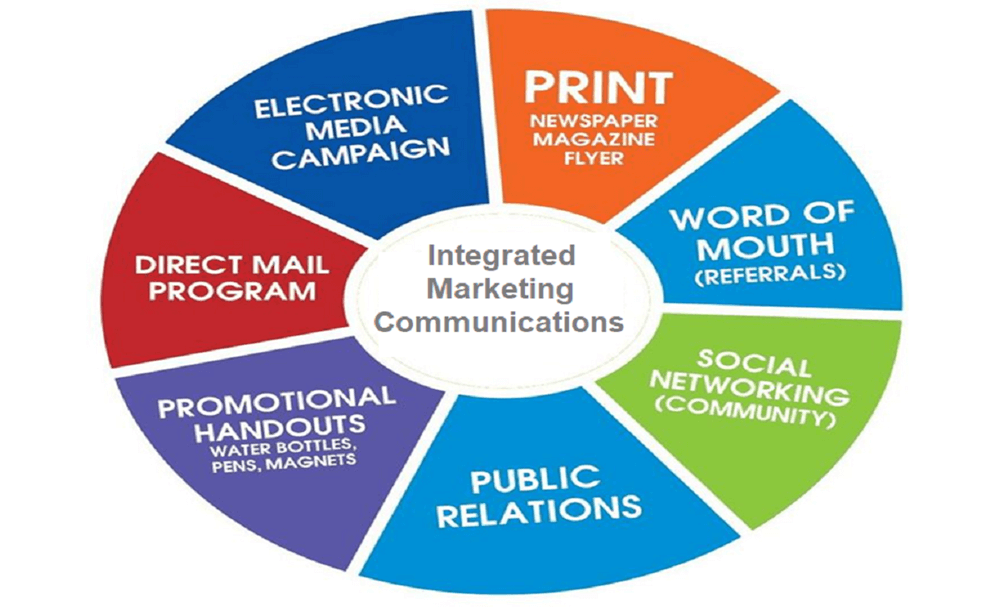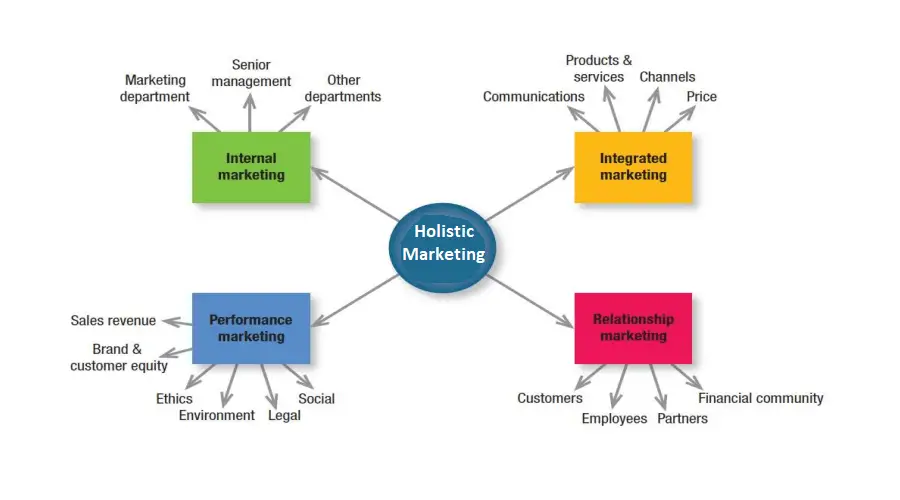
Marketing communication (MarCom), which comprises the promotion P of the marketing mix, refers to all forms of communication used by organizations to inform, remind, explain, persuade, and influence the attitudes, and buying behaviours of customers and others.
Modern marketing calls for more than developing a good product, pricing it attractively and making it accessible to target customers. Companies must also communicate with present and potential stakeholders and with the general public.
The purpose of marketing communications is to inform customers about the benefits and values of the product or brand that the company offers.
The marketing communications mix consists of various major modes of communication: advertising; sales promotion; public relations and publicity; events and experiences; direct marketing; online and social media marketing; mobile marketing; personal selling; and packaging.
Marketers (and Global marketers) can use all of these elements, either alone or in varying combinations.
Developing effective communications involves six major steps: Setting the objectives, Identifying the audience, Crafting the message, Deciding on the media, Developing the creative approach, and Measuring performance.
Marketing communications: Definition
“Marketing communications is a more contemporary term for promotion” (Baines, Fill and Rosengren, 2017, p.380)
“Although the 4Ps of marketing all convey important information about a product or service on offer, marketing communications typically refers to planned communication (‘promotion’)” (Baines, Fill and Rosengren, 2017, p.382).
Marketing Mix and Marketing Communications Mix
Marketing mix refers to the various elements that a company uses to influence consumers to buy its products.
The 4 Ps of Marketing mix are Product, Place, Price, Promotion.
Marketing communications (often abbreviated as MarCom) is part of the Promotion (P) of the Marketing mix. Marketing communications refers to the tools, media and messages used by a firm to engage audiences.
Key Tools of Marketing Communications
Five key tools used in MarCom are advertising, PR, sales promotion, direct marketing and personal selling.
Five Core Tools
Advertising: Sponsored paid message that is communicated through non-personal channels. Example: Print, TV, outdoor
Sales Promotion: Refers to any paid consumer or trade communication programme of limited duration that adds tangible value to a product or brand. Short-term incentives to encourage the purchase or sale of a product or service. Examples: Coupons, discounts, displays, and demonstrations.
Public Relations: Building good relations with company‘s various publics by obtaining favourable publicity; building up a good corporate image, and handling or heading off unfavourable rumours, stories, and events. Examples: press releases, sponsorships, special events, webpages.
Personal Selling: Refers to a person-to-person communication between a company representative and a prospective buyer. The seller’s communication effort is focused on informing and persuading the prospect. Personal presentation by the firm’s sales force for the purpose of making sales and building customer relationships. Examples: presentations, trade shows.
Direct marketing: Refers to marketing messages that rely on direct communication or distribution to the consumers (instead of speaking with them). Examples: Mail, email, texting campaigns, social media.
Global marketers can use all of these elements, either alone or in varying combinations.
6 Classes of Media: Broadcast. Print. Outdoor. Digital. In-Store. Other e.g. cinema
4 Forms of Content: Informational. Emotional. User Generated. Branded Content
Types of Messages for the Communication Mix
- Informational Messages
- Emotional Messages
- User Generated Content
- Branded Content
Elements and Tasks of Marketing Communications
The three elements of marketing communication.
Engagement – what are the audiences’ communications needs and is it possible to engage with them on their terms using one-way, two-way or dialogic communications?
Audiences – which specific audience(s) do we need to communicate with and what are their various behaviour and information processing needs?
Responses – what are the desired outcomes of the communication process? Are they based on changes in perception, values and beliefs or are changes in behaviour required?
Read:
- The Linear Model of Communication
- The Two-Step Model of Communication
- The Interaction Model of Communication
DRIP: Tasks of Marketing Communications
- Differentiate (be different) – to position a brand so that it is perceived to be different to its competitors
- Reinforce (brand) – to remind or reassure customers about a brand
- Inform (existence) – to make customers aware of a brand’s existence or attributes
- Persuade (particular ways) – to encourage customers to behave in particular ways
Integrated marketing communication (IMC)
To effectively communicate across borders, global companies often embrace an integrated approach to marketing communications.
When a company embraces integrated marketing communication (IMC) it recognizes that the various elements of a company’s communication strategy must be carefully coordinated to inform the market clearly and persuasively about the company and its products.
Elements of IMC (Promotion Mix): It is key to find the mix of media (Advertising, Sales Promotion, Personal Selling, Direct marketing, Public Relations) that best communicates the brand message and enhances the customer brand experience.
IMC means carefully integrating and coordinating the company’s many communications channels to deliver a clear, consistent and compelling message about an organisation and its products.
IMC means that companies must carefully coordinate all these customer touch points to ensure a clear brand message.
“We create demand for our brand by being flexible about how we tell the story, we do not rigidly stay with one approach … we have an integrated marketing model that involves all elements of the marketing mix from digital to sports marketing, from event marketing to advertising to entertainment, all sitting at the table driving ideas.” – Nike

The Changing Media Landscape
Commercial media has been used to convey messages designed to develop consumers’ attitudes and feelings towards brands.
Today, many of the messages are designed to a provoke either an attitudinal or a behavioural response and this means using different media.
Direct-response media enable receivers to respond to a message and this represents interaction. Direct-response media also allows clients the opportunity to measure the volume, frequency and value of audience responses.
Digital media enable audiences to interact and provide content (UGC), and discuss and consider the opinions and attitudes of others.
Personal Influencers
Personal influences can enhance the effectiveness of marketing communication activities.
Opinion Leaders belong to the same peer group as the people they influence, they are more gregarious and more self-confident than non-leaders and are more confident of their role. Their influence is based on informal expertise.
Opinion Formers do not belong to the same peer group as the people they influence. Their exert personal influence because of their profession, authority, education or status associated with the object of the communication process. Their influence is based on formal expertise.
Word of Mouth communication has become one of the most significant and most powerful forms of marketing communications.
Create a Marketing Communication Budget
Here’s how to prepare a Marketing Communication Budget.
Listed below are some of the more common approaches to budgeting:
Objective and task – identifying the overall objectives and then breaking these down into specific tasks and calculating the budget accordingly. For example, to sell x million cans of Coke would require x percent levels of awareness, which would require x number of impressions, which would require x amount of advertising, which would cost £x. This is sometimes called the ‘ideal’ or ‘task’ approach.
Modelling involves the use of a variety of econometric and simulation techniques to determine how various budget levels may affect performance (eg sales). An example of this is Unilever’s AMTES area market-testing model.
- Profit optimization tries to find the optimum marketing spend that would generate the most profit. It is based on ensuring that the marginal revenue derived from each marketing communications activity exceeds the marginal cost.
Percentage of sales is a crude but quick way of calculating a budget. For example, taking 5 per cent of £1 million forecasted sales means the marketing budget is £50,000. In B2B markets, the percentage ranges from 0.5 to 2 per cent, and in B2C markets it ranges from 5 to 20 percent.
Competitive parity analyses competitors’ marketing communications spends. Basically, it suggests that if an organization wants to match a competitor it should spend the same amount as that competitor.
Affordability is usually driven by accountants, who draw up business plans, work out profitability and then allocate some budget to marketing based on what is left over or affordable. This is the opposite of the objective and task method. It is based upon what is affordable after taking all costs and an amount of profit away from sales.
Payback period is the time taken for an integrated campaign to pay back the costs (or budget) of the marketing communications.
Arbitration requires a senior member of staff to arbitrate between different views of the marketing team and the rest of the business.
Successful Case Studies
Barbie movie marketing success: Case study
BATheories.com is managed by a group of educators from Mumbai. We also manage the website AcademicsHQ.com. Our panel includes experienced professionals and lecturers with a background in management. BATheories is where we talk about the various business theories and models for BA (Business Administration) students.